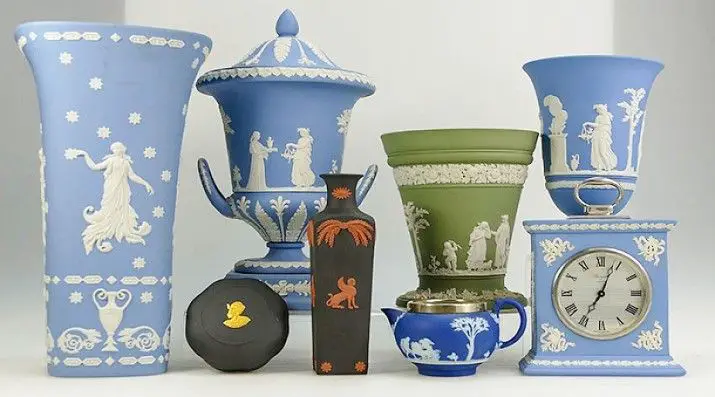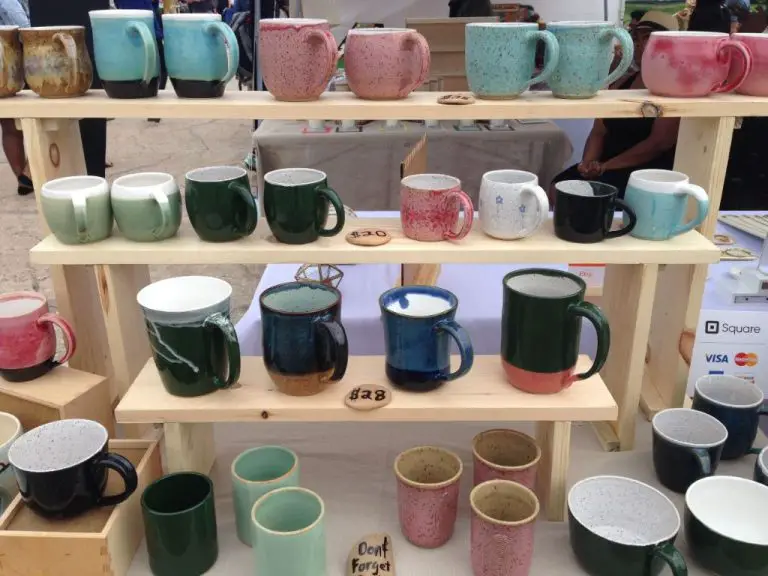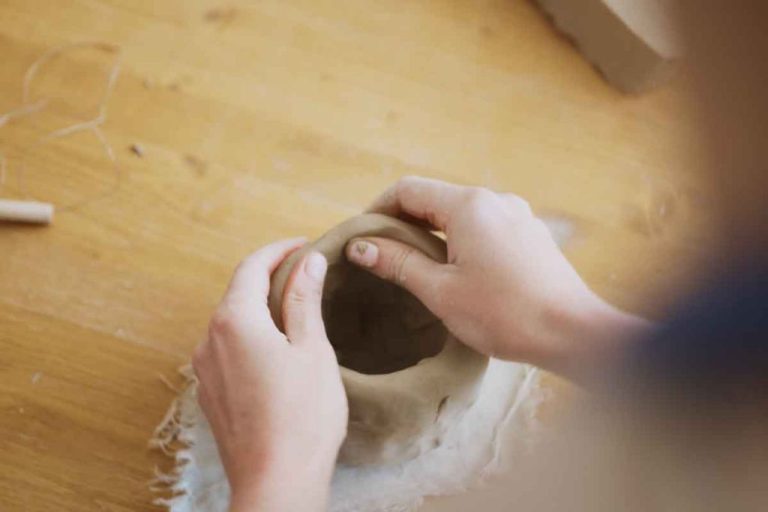How Much Can You Earn As A Potter?
Pottery making is an ancient and beloved craft that has evolved over thousands of years. In today’s world, potters use both traditional and modern techniques to create beautiful, functional works of art. Some potters work as independent artists selling their creations, while others produce commercial ware or teach pottery skills. This article provides an in-depth look at pottery as a profession in the 21st century. We examine typical earnings, expenses, and factors that affect a potter’s income. The goal is to give aspiring and current potters a realistic idea of how much money they can expect to earn through various pottery-related careers.
Median Salary for Potters
According to the Bureau of Labor Statistics, the median annual salary for potters and porcelain makers is $30,480 as of May 2020.1 This works out to a median hourly wage of around $14.65.
Another source, ZipRecruiter, reports the average hourly wage for potters as $16.75 as of February 2024.2 This translates to approximately $34,840 per year assuming a 40 hour work week.
Overall, most sources show the median annual earnings for potters falling in the range of $30,000 to $35,000. However, salaries can vary significantly based on factors like geographic location, skill level, reputation, and whether the potter is self-employed or working for an organization.
Factors That Impact Earnings
There are several key factors that impact how much a potter can earn, including:
Location – Potters based in larger cities and tourist destinations tend to earn more as they have a bigger customer base and market for their work. Being located near affluent communities also helps.
Skills/Experience – Highly skilled potters with years of experience command higher prices for their work. Their expertise allows them to create more complex and intricate pieces.
Reputation – Well-known potters who have built a reputation over many years earn more as collectors will pay top dollar for their work. Building an audience and following is key.
Type of Pottery – Potters who focus on unique, custom, high-end artistic pieces earn much more than those making functional pottery sold at retail. One-of-a-kind works fetch higher prices.
According to discussions on Ceramic Arts Daily, potters can increase their income by targeting the right demographics, finding profitable niche markets, and mastering distinct skills like Raku firing 1.
Self-Employed vs Salaried
There are pros and cons to being self-employed as a potter versus having a salaried job at a studio or company.
Some pros of being self-employed include:
- More control over your work and schedule
- Potential to earn more money from sales
- Flexibility to pursue creative projects
However, self-employment also has some downsides:
- Irregular income that fluctuates
- No benefits like health insurance or retirement plans
- Need to spend time on marketing and business tasks
Salaried potters may have more job security and predictable pay. Studio jobs provide access to equipment and materials without major personal investment. But salaried potters have less control over the type of work they produce.
Many potters start out self-employed and transition to salaried jobs or teaching later on. Others find a balance through both self-employment and some salaried work. There are pros and cons to each path that potters should weigh carefully.
Selling Pottery
Many potters earn income by selling their handmade pottery and ceramic work through various channels – online, galleries and at craft fairs.
The internet has opened up opportunities for potters to sell their work online through their own websites, Etsy shops, and social media. According to one survey from Ceramic Arts Network, potters can make between $15-30 per hour selling their pottery online.
Local art galleries and co-op galleries also provide an avenue for potters to display and sell their pieces. Galleries typically take a commission of 40-50% on sold items. According to artists on Reddit, building relationships with galleries and developing a collector base can lead to steadier sales and income over time.
Craft shows and art fairs allow potters to sell directly to customers. Setting up booths at these events takes time and money, but the artist keeps all the profits. Well-known events can provide good exposure, especially when potters showcase unique, quality pieces.
Teaching
Teaching pottery classes and workshops can provide a steady source of income for professional potters. According to ZipRecruiter, the average hourly pay for a Ceramics Teacher in the US as of February 2024 is $35.67 per hour. Pay rates can vary depending on factors like years of experience, location, and whether you are teaching at a university, community center, or private studio.
On discussion forums like Reddit, professional potters report earning $25-45 per hour for teaching classes and workshops. More experienced teachers may charge up to $70 per hour for private lessons. Teaching 10-20 hours per week could generate $250-$1400 or more in supplemental monthly income for a potter.
According to salary data, the average annual pay for a Ceramics Teacher is $70,581 in the US. Potters who teach full-time at schools, colleges, and universities can expect a higher yearly salary, along with benefits.
In addition to hourly or contractual wages, teaching provides an opportunity to sell pottery supplies and finished pieces to students. Building a reputation through teaching can also lead to commissioned work, referrals, and other income opportunities.
Apprenticeships
Apprenticeships provide aspiring potters with hands-on training and experience working under a master potter. This allows them to develop their skills and learn the ins and outs of running a pottery studio or business. According to research, pay for pottery apprenticeships varies, but often starts out at minimum wage or just above.
For example, one pottery studio offers apprentices minimum wage for up to 12 hours per week, and $12/hour beyond that (Source). Another studio pays apprentices piece work rates, allowing them to control their own income and advance based on productivity (Source). Reddit users report apprentice pay starting around $8-15/hour, with more skilled apprentices earning up to $20/hour.
The main benefits of apprenticeships are the hands-on training, access to equipment and materials, and mentorship. While the pay is often low starting out, dedicated apprentices can gain expertise rapidly under a master potter’s guidance. Many view this as an investment in their future pottery career.
Highest Earning Potters
Some of the highest earning potters are able to command extremely high prices for their work. According to Cherri C Pottery, potter Tama Smith crafts and sells pottery with abstract glazes inspired by the North Dakota landscape. Her pieces have sold for over $20,000. Famous British potter Grayson Perry‘s works regularly fetch 6 figure sums at auction. His decorative ceramic vase “Sex Mad” sold for $185,000 in 2011.
Other top earning potters include Jeremy Ayers, whose large-scale installations and sculptures sell for tens of thousands of dollars. Many of the highest prices are commanded by potters who have achieved critical acclaim and recognition during their lifetimes.
Expenses
Being a potter requires a significant investment in materials, equipment, and working space. According to https://wheelandclay.com/blog/costs-to-start-pottery/, the cost of clay can range from $25-$50 per 25 lb bag. Glazes and coloring oxides can cost $15-$30 per pint or pound. Basic tools like sculpting sticks, ribs, sponges, etc. can cost $100-$300 to acquire an initial set.
The pottery wheel is a major expense, with basic wheels starting around $300 and high-end wheels costing over $2000, according to https://creekroadpottery.com/pottery-cost-analysis-spread-sheet/. Additional equipment like kilns (starting around $600), pug mills, slab rollers, extruders, etc. can cost thousands of dollars to set up a fully equipped studio.
Securing studio space is another big expense for potters. Renting a studio can cost $200-$1000 per month depending on size and location. Building a home studio requires an investment in ventilation, electricity, plumbing, and insurance costs.
Ongoing operating expenses include utility bills, equipment maintenance and repairs, shipping materials, marketing costs, and more. Potters need to carefully track expenses and have an adequate cash flow to sustain their business.
Conclusion
Summary and final thoughts.
In summary, the earnings potential for potters depends on many factors, including skill level, reputation, whether they sell their work independently or are employed by a studio, and more. While the median salary for potters is around $30,000, some highly successful studio potters can earn well into six figures. However, expenses like materials, studio space, equipment maintenance, shipping costs, and marketing must be accounted for. Overall, pottery can be a rewarding career for creatives who enjoy working with their hands and making unique, artistic pieces, but it does require dedication, patience, and perseverance.
For those considering pottery as a career, start by developing your skills through classes and workshops, and be prepared for an entrepreneurial lifestyle if selling independently. Apprenticeships and partnerships can provide support and supplement income in the early stages. As your skills progress, consider different avenues like teaching workshops, working for a studio, selling at art fairs, and online. With passion and persistence, pottery can become a fulfilling and potentially lucrative creative pursuit.





